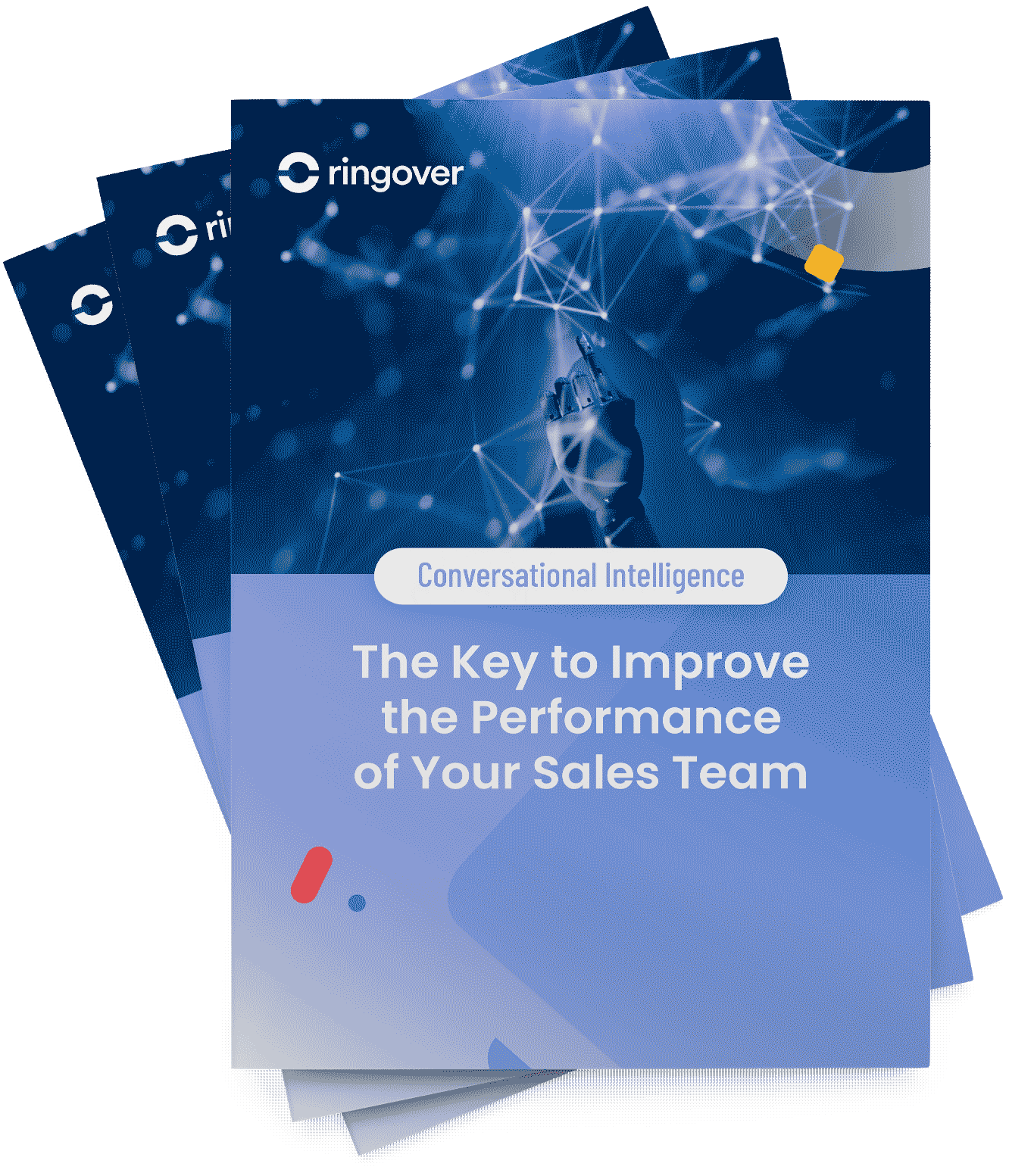Summary
Sales role playing transforms theoretical learning into immediately actionable skills. On average, learners retain about 75% of knowledge when participating in active simulations (role-playing), compared to only 5% when exposed to traditional lecture-based training [1].
This method also boosts sales closing rates–studies show a 20–45% increase in the number of deals closed when sales teams regularly practice objection handling, negotiation, or closing exercises [1].
These figures make one thing clear: to train sales professionals effectively, it's not enough to just teach them techniques–they must be given realistic scenarios, guided practice, and immediate feedback. Ready to discover the best sales role-play examples to develop these essential skills?
What Makes an Effective Sales Role-Play?
A sales role-play involves placing a salesperson in a realistic selling scenario. The goal isn't to recite a rigid script but to learn how to react spontaneously and appropriately, just as they would in a real interaction with a prospect.
An effective exercise is built on three key pillars:
- Scenario Realism: The closer the situation is to real life, the more transferable the learning becomes. For example, simulating a 30-second pitch at a trade show or handling a price objection during a client meeting.
- Interactivity and Flexibility: The role-play should allow participants to test different approaches, explore alternatives, and respond to varied customer reactions. This prevents robotic responses and better prepares salespeople for the unexpected.
- Immediate Feedback: Without precise feedback, the exercise loses much of its value. The ideal setup combines group debriefs (sharing impressions and best practices) with individual feedback on body language, word choice, and tone.
An effective sales role-play is therefore a true skills laboratory: A space to test, adjust, and strengthen reflexes, much like a musician practicing scales.
Making sure your sales reps practice effectively with role play is easy if you have Ringover's tool Pitch Room, an AI coaching platform. Pitch Room offers various difficulty levels and personas so your sales reps can easily brush up on their skills. Pitch Room's AI technology also provides personalized tips and performance analysis, making the process even easier and more effective.
10 Sales Role-Play Scenarios with Inspiring Examples and Practical Tips
Role-Play #1: Learning to Pitch Quickly
The lightning pitch–often called the elevator pitch–is a concise, impactful presentation that must fit into under one minute. The idea is to capture a prospect's attention immediately, whether at a trade show, on a phone call, or even during an informal conversation.
A good pitch doesn't mechanically describe an offer: it should spark curiosity, highlight a tangible benefit, and make the listener want to know more.
Skills practiced during this exercise:
- Ability to synthesize complex information
- Verbal and nonverbal impact: tone, pace, body language
- Highlighting customer benefits rather than product features
Example dialogue for this role-play
- Prospect: “So, what exactly do you do?”
- Sales rep: “We help companies in the [target industry] reduce their prospecting time by 30% by centralizing their calls, emails, and LinkedIn messages into one platform. Within a month, your sales reps can spend twice as much time selling instead of doing repetitive tasks.”
- Prospect: “Interesting… and how does it work in practice?”
Craft your pitch like a short story, structured in three steps:
1. The customer's problem
2. The solution your product/service provides
3. A concrete benefit (time saved, efficiency gained, cost reduction)
A good pitch should be easy to remember and adaptable to each audience. Practice delivering it in both 30 seconds and 2 minutes so you always have the right format ready.
Role-Play #2: Simulating the Discovery Phase
Why is this step crucial? The discovery phase is one of the most strategic moments in a sales conversation. This is where the sales rep gathers essential information to understand the prospect's context, challenges, and needs.
A well-executed discovery call not only guides the rest of the conversation–it also builds trust. Poor discovery often leads to generic presentations… and a prospect who quickly loses interest.
Skills practiced in this role-play
- Active listening: reformulating to show understanding
- Open questioning: going beyond yes/no answers
- Empathy and a consultative posture: showing genuine interest in the client's needs
Example dialogue
- Sales rep: “To better understand your priorities, could you tell me how your sales team currently organizes prospecting?”
- Prospect: “We mainly rely on calls and some email campaigns, but it's quite time-consuming.”
- Sales rep: “I understand. So if I summarize, your main challenge is saving time when identifying qualified prospects. Is that correct?”
- Prospect: “Exactly.”
Before each simulation, prepare a list of open questions tailored to your buyer persona:
- “What are your top short-term priorities?”
- “What challenges do you face with your current setup?”
- “If you had a magic wand, what's the one thing you'd change first?”
👉 The key: let the prospect speak two-thirds of the time. Your job isn't to fill the space–it's to guide the conversation toward the insights you'll need to present a tailored solution.
Role-Play #3: Product Demo over Video
The demo is a decisive moment: it's often the point where the prospect finally visualizes how your solution will solve their problems. With remote communication becoming mainstream, video demos have become essential.
A well-delivered demo can convince in minutes… a poorly prepared one can raise doubts.
Skills practiced:
- Clarity and simplicity: explaining a sometimes complex product
- Command of digital tools: sharing your screen, navigating smoothly, avoiding technical issues
- Real-time adaptability: adjusting the flow based on the prospect's reactions or questions
Example dialogue
- Sales rep: “Here's our dashboard. As you can see, it centralizes all your calls, emails, and LinkedIn messages in one place. This saves you from switching between multiple tools.”
- Prospect: “Can I filter by sales rep to track individual performance?”
- Sales rep: “Great question. Yes, let me show you. Just click here, and you'll see each team member's real-time metrics.”
1. A successful demo starts with preparation. Structure it clearly:
2. Begin with context (“You told me your main challenge was X…”)
3. Show a feature that directly addresses the need uncovered in discovery
4. Remember: less is more, so just show what would matter most to the client
👉 Always prepare a technical Plan B (e.g., a short pre-recorded video) in case your connection glitches.
Role-Play #4: Benefits vs. Features
Why is this distinction essential? Many sales reps fall into the trap of listing features. But prospects don't buy a technical description, they buy a solution to their problem. Highlighting benefits (time saved, cost reductions, productivity gains) is far more compelling than focusing solely on “what the tool does.”
Skills practiced:
- Turning a feature into a clear business benefit
- Developing a customer-centric pitch instead of a product-centric one
- Using concrete examples or use cases
Example dialogue
- Sales rep: “Our tool includes a native integration with your CRM.”
- Prospect: “What does that change for us?”
- Sales rep: “It means your reps won't have to manually enter information after every call. They'll save around two hours a week each, time they can dedicate to actual selling.”
Role-Play #5: Using Social Proof
In the decision-making process, prospects place great value on what other customers have experienced. Testimonials, online reviews, case studies, and big-name logos all strengthen your credibility.
Social proof acts as a mental shortcut that reduces doubt and speeds up decision-making.
Skills practiced:
- Introducing a relevant success story at the right moment
- Using storytelling to bring a customer testimonial to life
- Adapting the example to the prospect's sector and profile
Example dialogue
- Prospect: “How can I be sure your solution will work for us?”
- Sales rep: “Great question. One of our clients in your same industry increased their number of qualified meetings by 35% in three months thanks to our tool. I'd be happy to share their feedback with you.”
Build a library of customer stories categorized by prospect type (company size, industry, challenges). This helps sales reps pick the most credible example for each situation.
👉 Bonus tip: polish the format. A quantified testimonial, a direct client quote, or a short video has much more impact than a generic explanation.
Role-Play #6: Handling Competitor Comparisons
This is a delicate moment. When a prospect mentions a competitor, the sales rep's reaction can make all the difference. Mishandling this moment can damage credibility.
The goal is to highlight your solution without disparaging the other and to turn the comparison into an opportunity to reinforce your strengths.
Skills practiced in this exercise
- Managing the conversation with diplomacy and professionalism
- Emphasizing factual differentiators
- Reassuring the prospect while maintaining trust
Example dialogue
- Prospect: “We're already working with [Competitor Name]. Why should we switch?”
- Sales rep: “I completely understand. [Competitor Name] is a respected player. The main difference lies in [key differentiator], which would allow you to gain [specific benefit]. In fact, several of our clients recently made this transition and saw significant results.”
Absolutely avoid directly criticizing your competitors. Instead, use an approach based on:
- Acknowledgment (“It's a solid solution, I understand why you chose it.”)
- Highlighting your unique added value
A customer example who compared both solutions and successfully chose yours
👉 Golden rule: stay positive, factual, and benefit-oriented.
Role-Play #7: Handling Objections
This stage is critical. Objections are inevitable in any sales cycle: price concerns, doubts about effectiveness, poor timing, etc. Rather than fearing them, great sales reps see objections as signs of interest. Each objection opens the door to deeper conversation and clearer needs.
Skills practiced in this role-play
- Active listening and empathy: letting the prospect express doubts without interruption
- Reformulation: demonstrating clear understanding
- Structured response: providing a factual element or proof to overcome the concern
- Emotional management: staying calm and confident even when the objection is firm
Example dialogue
- Prospect: “Your solution is too expensive!”
- Sales rep: “If I understand correctly, you're concerned that the investment won't pay off quickly. Is that right?”
- Prospect: “Yes, exactly.”
- Sales rep: “We hear that often. To give you an idea, most of our clients see ROI in under six months thanks to the time savings they achieve. Would you like me to show you a concrete example?”
Prepare a list of the most common objections (price, timing, competition, integration, etc.) and train your sales reps to respond with precise examples.
👉 Remember the 3 R Rule: Receive the objection → Reformulate → Respond
Role-Play #8: Knowing How to Negotiate
Negotiation is not a battle, it's a search for balance between customer and company interests. It often comes near the end of the sales cycle, when the prospect is interested but wants a better price, specific conditions, or extra guarantees. When handled well, negotiation can turn hesitation into a solid agreement.
Skills practiced
- Preparation: knowing your margins, limits, and alternatives
- Managing concessions: never give something without receiving something in return
- Assertive communication: staying firm while maintaining a collaborative tone
- Value creation: shifting the discussion from cost to value and benefits
Example dialogue
- Prospect: “Your offer is interesting, but if you reduce the price by 15%, I'll sign.”
- Sales rep: “I understand your request. To be transparent, a 15% discount isn't possible. However, what I can offer is an additional month of onboarding support at no cost. That would help secure your team during the rollout. Would that meet your expectations?”
Role-Play #9: The Closing
Sales closing is the moment when the discussion turns into a concrete commitment. Yet many sales reps dread this phase, fearing they'll appear too pushy. But successful closing is about recognizing the right moment and proposing a clear next step, without forcing the prospect's hand.
Skills practiced
- Recognizing buying signals: questions about pricing, timelines, logistics
- Using silence strategically
- Asking the decisive closing question with confidence and naturalness
- Managing the transition from conversation to signature smoothly
Example dialogue
- Prospect: “So if I understand correctly, your team also helps with the integration?”
- Sales rep: “Exactly, and that's included. At this stage, would you like us to confirm the launch together so you can start next month?”
- Prospect: “Yes, let's do it.”
Role-Play #10: Knowing When to Walk Away
Saying “no” to a sales opportunity can feel counterintuitive. Yet some prospects simply aren't the right fit: insufficient budget, unrealistic expectations, or misaligned strategy. Knowing when to walk away avoids toxic customer relationships, saves time, and allows you to focus on high-potential opportunities.
Skills practiced
- Clear judgment: recognizing when a sale isn't viable
- Time management: prioritizing high-potential leads
- Assertive communication: delivering the decision tactfully
- Long-term mindset: preserving a positive relationship even without closing
Example dialogue
- Prospect: “We'd need your solution to also include [feature outside scope].”
- Sales rep: “I understand. However, our tool isn't designed for that functionality, and I prefer to be transparent. If that feature is essential, there are solutions better suited to your needs. But if your priorities remain [main problem], we'd be happy to support you.”
How AI Can Help with Your Sales Role-Plays
AI is transforming sales training, especially role-plays. It allows you to recreate realistic scenarios, measure performance objectively, and deliver feedback that traditional methods cannot match.
1. Create realistic, unlimited scenarios with AI
One major challenge in traditional role-plays is variety. Often, teams repeat the same scenarios, limiting learning. With AI, you can generate endless contexts:
- A rushed prospect giving you only two minutes
- A hesitant buyer comparing three competitors
- A decision-maker stuck on price or timing
Every simulation is different, forcing sales reps to adapt continuously, just like in real life. This enhances their ability to manage unexpected situations, a critical sales skill.
2. Analyze performance in real time
Modern telephony and CRM systems with AI already record, transcribe, and analyze calls automatically. In a training context, this becomes incredibly powerful:
- Speech-time ratio (ideal: 70% prospect / 30% sales rep)
- Keyword detection (e.g., how often the main benefit was mentioned)
- Tone and pacing analysis to spot moments where the prospect lost interest
These objective indicators allow managers to rely on measurable insights rather than intuition. Empower by Ringover provides exactly this type of analysis, helping sales teams refine their approach and strengthen their pitch.
3. Provide Personalized Feedback
Traditionally, after a role-play, the feedback depends on the trainer or colleagues observing the session. With AI, the feedback becomes objective and data-driven. Here are some examples of automated feedback:
- “You interrupted your prospect 3 times within the first 2 minutes.”
- “You spoke 80% of the time, so try reducing your speaking ratio to leave more space for the client.”
- “Your response to the ‘too expensive' objection lacked numerical proof.”
This helps the sales rep clearly understand what to improve and immediately refine their approach. When role-plays are combined with data-driven feedback (via AI or analytics tools), improvements become measurable: high-quality training can increase individual sales performance by around 20% on average [2].
4. Gamify the Training
AI doesn't just analyze, it can also make training more engaging. Simulations can give scores based on how objections are handled, the clarity of the pitch, or the ability to close.
Imagine a platform where each sales rep “levels up” by successfully completing scenarios, just like in a video game. This playful approach boosts repetition and reduces fatigue.
Some companies go even further by introducing internal leaderboards or skill badges (e.g., “Price Objection Expert,” “Closing Master”), which strengthen both individual and team motivation.
Reinvent Your Sales Role-Plays
Role-plays are powerful performance boosters. By placing sales reps in realistic situations, they help them develop reflexes, refine their posture, and gain confidence. From elevator pitches to closing, including negotiation and objection handling, each scenario becomes a training ground that transforms theory into practice.
With AI support, these exercises reach an entirely new level: unlimited scenarios, precise feedback, progress tracking, and even gamification to enhance engagement. This combination accelerates skill development, strengthens both individual and collective efficiency, and ultimately boosts sales results.
👉 This is exactly what Empower delivers with its AI-enhanced analysis and insights into the quality of your sales team's conversations.
Try Empower for free and see firsthand how your team can level up their skills.
Sales Role Play FAQ
What is a sales role-play?
A sales role-play is a simulation exercise in which a sales rep reenacts a realistic scenario with a colleague or trainer. The goal is to practice handling real-life situations (pitching, objections, negotiation, etc.) and to strengthen sales skills.
What are the benefits of sales role-plays?
Sales role-plays improve confidence, responsiveness, and persuasiveness. They allow reps to practice without risk, receive immediate feedback, and accelerate skill development.
How long should a sales role-play last?
The ideal duration depends on the objective: An elevator pitch can take 2–3 minutes, while a negotiation or closing session might last 15–20 minutes. The key is keeping sessions short enough to allow repetition and variety.
Should role-plays be done in person or remotely?
Both formats are useful.
- In-person: focus on posture and body language.
- Remote (videoconference): simulate real conditions of many modern sales meetings.
The ideal approach is to alternate between both.
How can you measure the effectiveness of sales role-plays?
Effectiveness can be evaluated through improved closing rates, reduced onboarding time for new hires, qualitative feedback from trainers and peers, and, with AI, conversational analysis (talk ratio, objection handling, pitch clarity).
Which tools can be used to organize sales role-plays?
A simple two-person setup is enough to get started. But to go further, platforms like Empower allow real-time performance analysis and gamified training to boost team engagement.
Citations
- [1]https://www.td.org/content/atd-blog/why-role-play-delivers-75-retention-vs-5-from-lectures
- [2]https://www.amraandelma.com/sales-training-marketing-statistics/
Published on November 17, 2025.



